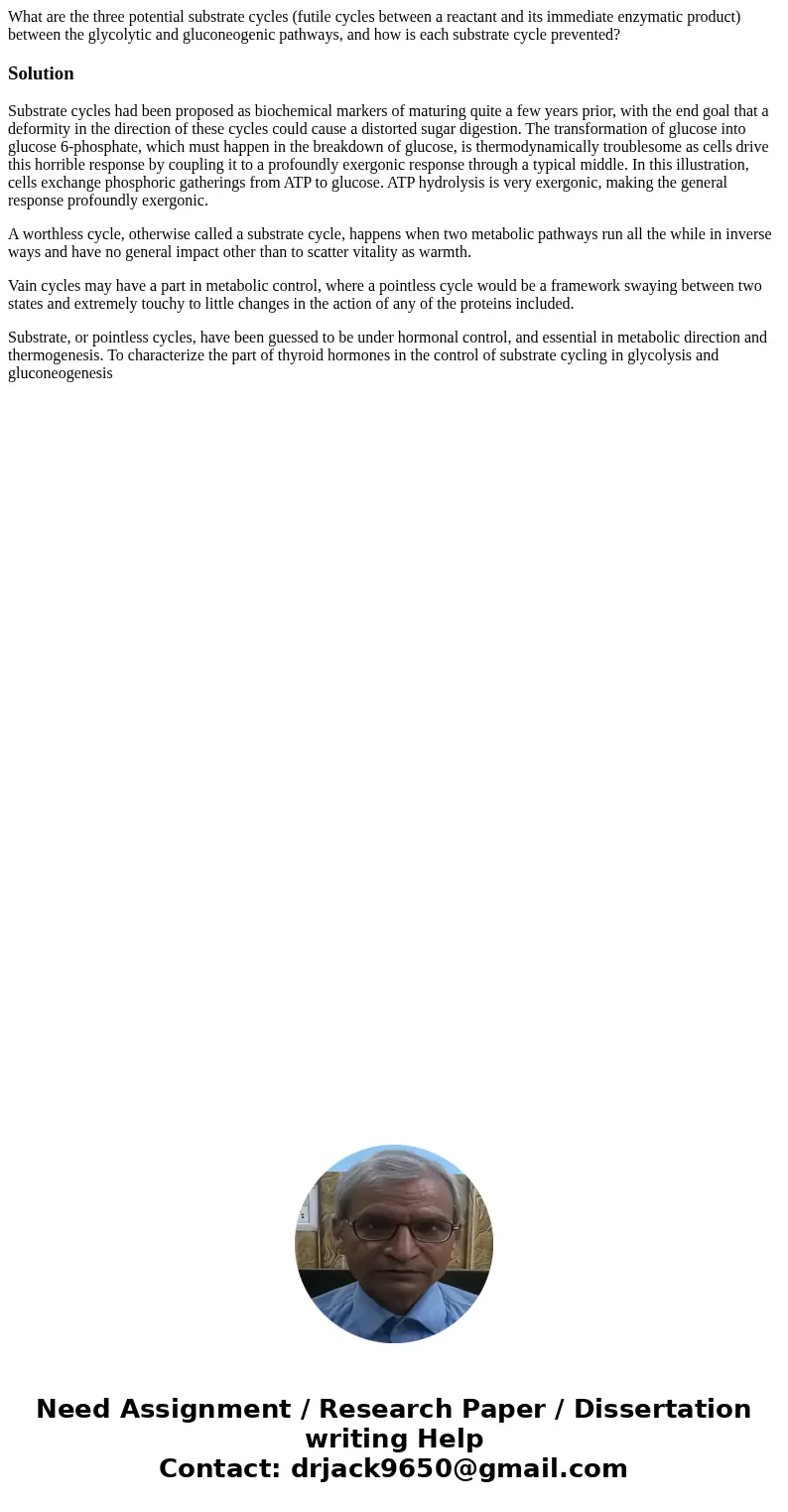What are the three potential substrate cycles futile cycles
What are the three potential substrate cycles (futile cycles between a reactant and its immediate enzymatic product) between the glycolytic and gluconeogenic pathways, and how is each substrate cycle prevented?
Solution
Substrate cycles had been proposed as biochemical markers of maturing quite a few years prior, with the end goal that a deformity in the direction of these cycles could cause a distorted sugar digestion. The transformation of glucose into glucose 6-phosphate, which must happen in the breakdown of glucose, is thermodynamically troublesome as cells drive this horrible response by coupling it to a profoundly exergonic response through a typical middle. In this illustration, cells exchange phosphoric gatherings from ATP to glucose. ATP hydrolysis is very exergonic, making the general response profoundly exergonic.
A worthless cycle, otherwise called a substrate cycle, happens when two metabolic pathways run all the while in inverse ways and have no general impact other than to scatter vitality as warmth.
Vain cycles may have a part in metabolic control, where a pointless cycle would be a framework swaying between two states and extremely touchy to little changes in the action of any of the proteins included.
Substrate, or pointless cycles, have been guessed to be under hormonal control, and essential in metabolic direction and thermogenesis. To characterize the part of thyroid hormones in the control of substrate cycling in glycolysis and gluconeogenesis

 Homework Sourse
Homework Sourse